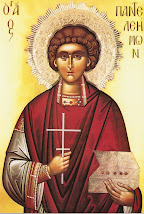The traditional lighting system in the Greek Orthodox Churches is the chandeliers. In our Church we had 3 of them. The John Doyle people are taking them down in a very secure and professional manner.
From history we know that the earliest candle chandeliers were used in medieval places of assembly. They generally took the form of a wooden cross with a number of spikes on which candles could be secured, the whole assembly being hoisted to a suitable height on a rope or chain suspended from a hook.
From the 15th century, more complex forms of chandeliers based on ring or crown designs began to become popular decorative features, found in palaces and homes of the nobility, clergy and merchant class. The high cost of night time illumination made the chandelier a symbol of luxury and status. By the early 18th century, ornate cast ormolu forms with long, curved arms and many candles could be found in the homes of much of the growing merchant class. In the nineteenth century, as gas light became a source of illumination, branched ceiling fixtures were produced, and the term gasolier, a portmanteau of gas and chandelier, was frequently used. Gas illuminated chandeliers appeared in the mid-19th century, and many candle chandeliers were converted to gas. By the 1890s, and the appearance of electricity for illumination, chandeliers were produced that used both gas and electricity. As distribution of electricity became wider, and the supply dependable, fixtures wired only for electricity became standard.
The world's largest Bohemian crystal chandelier, a gift from Queen Victoria, is located in the Dolmabahce Serai in Constantinople. The chandelier has 750 lamps and weighs 4.5 tons. Dolmabahçe has the largest collection of Bohemian and Baccarat crystal chandeliers in the world, and one of the great staircases has bannisters of Baccarat crystal.







































1 comment:
Παρακολουθώ με πολύ ενδιαφέρον!!!!!!!
Post a Comment